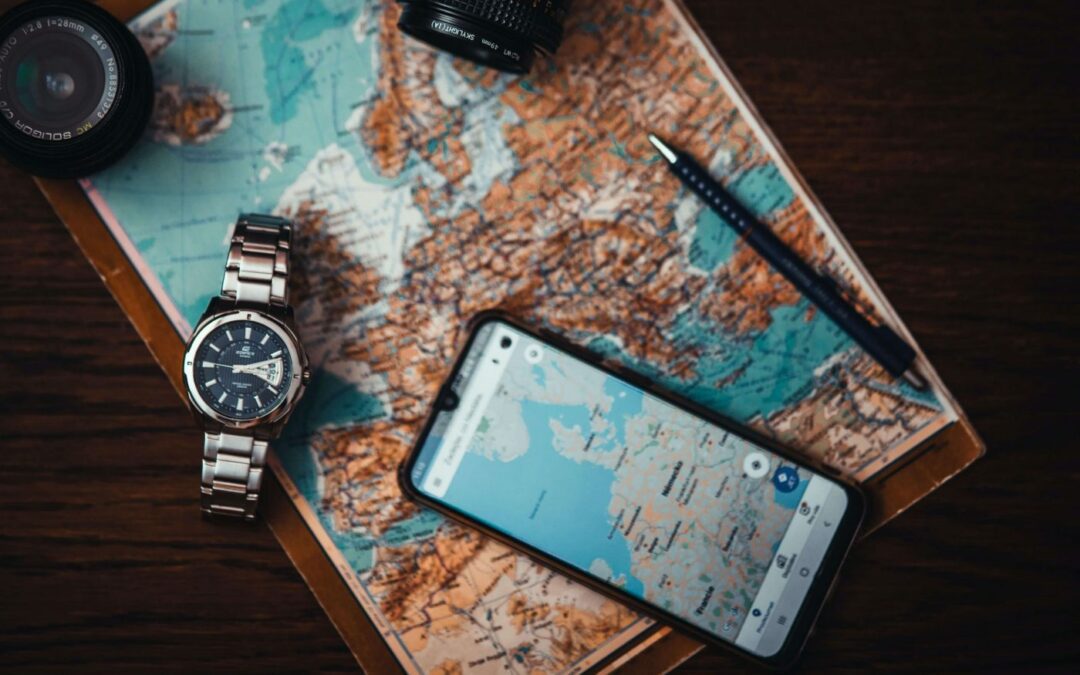The mountains, beaches, hills, rivers, and even the bar five kilometers away — they’re all calling.
We’re ready than ever before to finally not be in front of our screens, chasing deadlines, or taking Zoom calls.
The time has come.
Why we travel, where we travel, and primarily how we travel have changed significantly over the past few years. We’re very aware of what we want out of travel. The sweet irony is — we’re as reckless as we are careful.
In the current scenario, travel and what makes each journey, a learning experience, is supplemented now by a digital transformation that’s happening right before our eyes.
We’ve arrived in more ways than one.
With the help of innovative travel technologies, businesses catering to the tourism and hospitality industries can streamline their services. Automated AI, next-gen technology, and interfaces specifically created to simplify hassles have made tough borders seem easier to penetrate.
For instance, Instagram now plays a massive role in our journeys and travels. You may forget to call back home, but you will not fail to instantly post that picture of a cheese platter and a glass of wine as the rolling hills of Tuscany flank you.
Most importantly,
You’ve given all the power to Instagram – a non-human entity to govern your mood and aesthetic for the day.
Think about it, a hip, intuitive, easy-to-use app (that offers tons and tons of validation in seconds) isn’t the only thing that’s changing how we travel and curate experiences.
Great travel is about ensuring great guest experience
The Curator Hotel & Resort Collection has taken on a perceptive solution to keep its employees safe at all times. After all, travel isn’t just about guests; it’s also about those who put together experiences for us. Curator joined hands with React Mobile to outfit participating Curator members with wearable LTE panic buttons. When tapped, the inconspicuous wearable technology will alert the nearest LTE network of the employee’s location, alerting the hotel’s security network – all in real-time.
It’s one of the first big steps in ensuring that technology plays a significant role in shaping the future of travel, not just from viruses but also from those around us.
Two-factor authentications pave the way
A safe inside the cupboard, especially a digital one, was one of the first things guests would ask for in the bedrooms (apart from whether they could take home the bathroom slippers). Now, security and safety mean and look like slightly different things. With the rise of contactless solutions, travel is planned, booked, played out, and iterated via the internet. There is only one way to re-assure guests and tourism enablers that their money; their voyage is safe.
Hence, two-factor authentication is no more a novelty, but the norm. And it isn’t limited to payments only.
The way hospitality sector workers and front-desk employees open shop will now change. The simplest way to do this is to send an authentication code via a smartphone or email for login credentials. It ensures that workers are discouraged from sharing sensitive information like passwords with each other. It also re-enforces the very idea of data security and privacy.
UI UX design is catching up
We’re more than aware that this shift isn’t only transpiring in the tech space. The world of UI UX design is keeping up too. Apart from apps that reign supreme on the social media space, other design elements, and UI design are generally stripped down to the basics
Yet, less is more.
In a world that functions on a mobile-first approach, it’s crucial to make travel as seamless as possible. No, exceptional UI may not make that hike physically less taxing. Still, it will make booking a lot less complicated.
For instance, voice user interfaces (VUIs) make traveling an all-hands experience without your hands. See a plant that you like? Ask your phone to take a picture of it and then to find out precisely what sort of plant it is.
One of the main advantages of VUI is that a traveler can still interact with a product while paying attention to something else simultaneously. Hotels and other similar set-ups can benefit from VUIs to control and adjust room features like lighting and air conditioning, apart from entertainment devices.
Voice-controlled smart hubs aren’t just beneficial to travelers. It can be a boon to the entire hospitality industry. Whether you want the front desk to bring you a toasty towel or wake you up early the next day, you need not rely on the room phone or walk to the desk anymore. This way, the hotel can serve you better, and voila, improve ratings steadily.
Speaking of ratings, ever heard of TripAdvisor?
If you’ve ever traveled anywhere or planned to, you’ve most likely found yourself on the travel website at least once. So what was the secret to TripAdvisor’s success? Surely, several other websites and apps were catering to the wanderlust souls and dishing out as much information (even helpful ones) as they could. Remember Lonely Planet?
They shifted their focus to user reviews. While it may look like a nondescript element, it’s the one that will drive traffic to your website or app and make you a trusted source. A good rating can help elevate an establishment to greater heights. At the same time, a bad one (even if it may be false) may tarnish the reputation of any establishment in a matter of seconds.
If you’re building a website that’s host to many restaurants, eateries, hotels, and the like, not having a review button is a cardinal sin. While it’s a huge risk for establishments to put themselves at the mercy of guests reviews alone, it’s also one that will reap enormous benefits.
Challenge us with your travel app transformation. Let us help you redefine your business with digital innovation.





Share